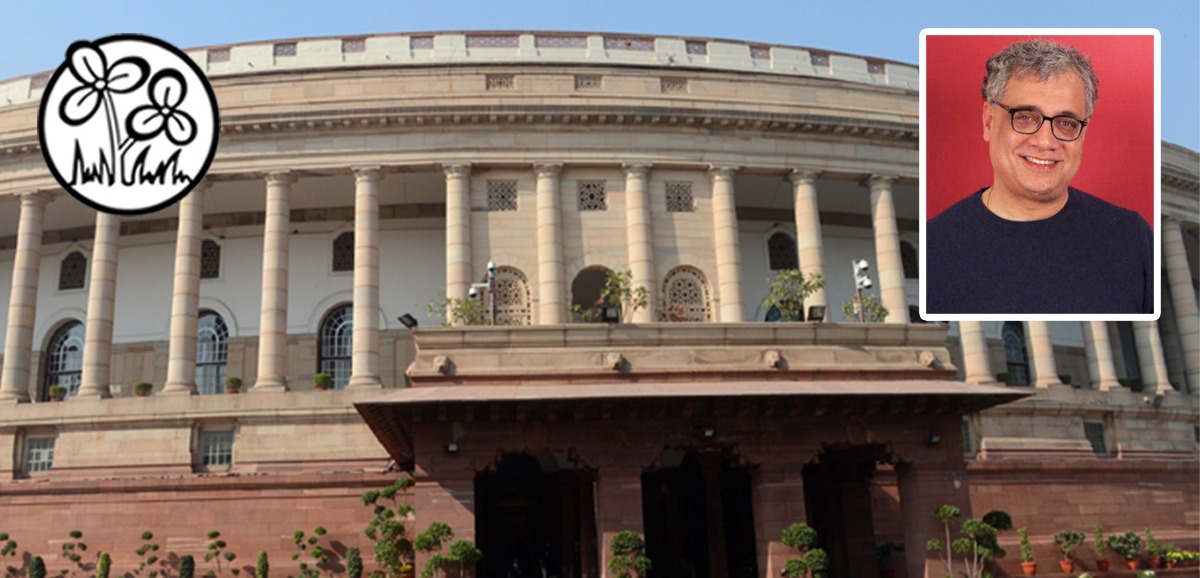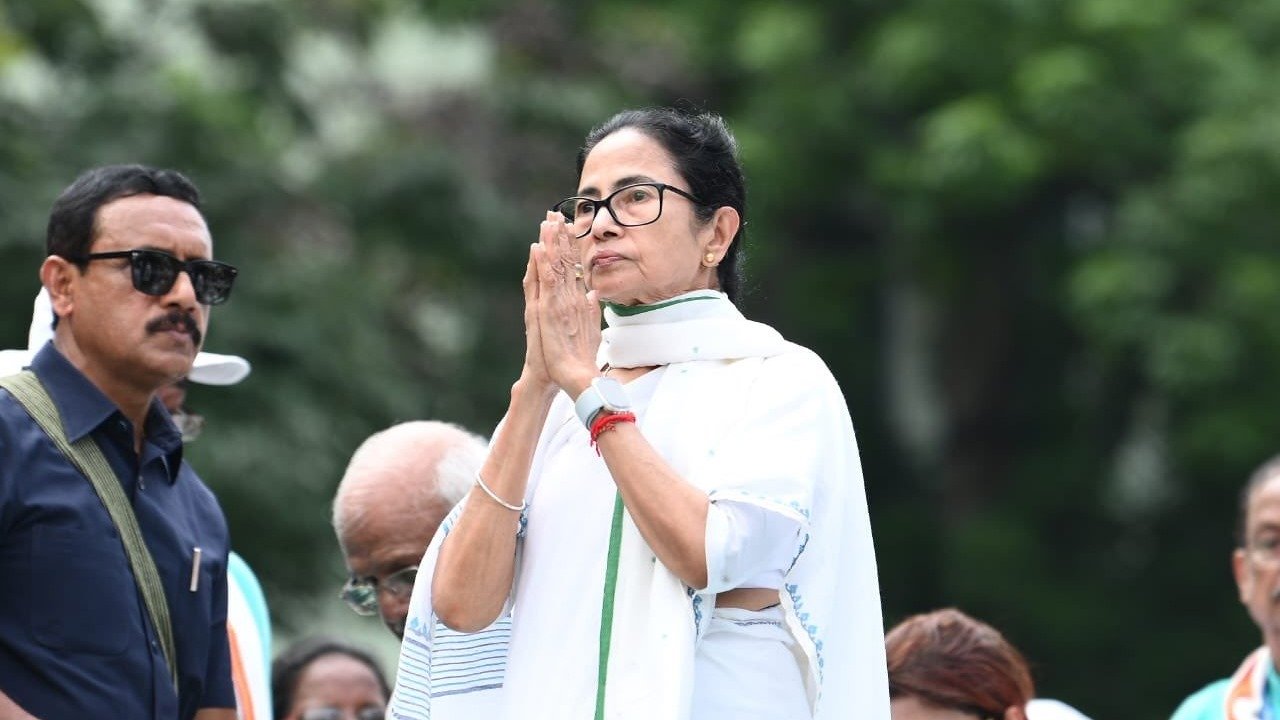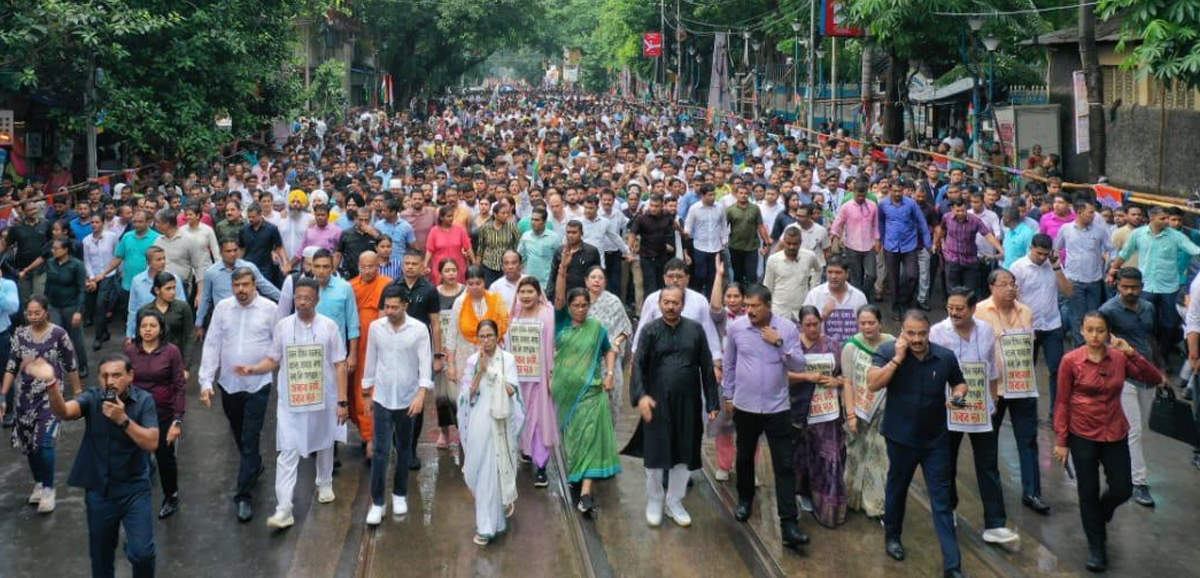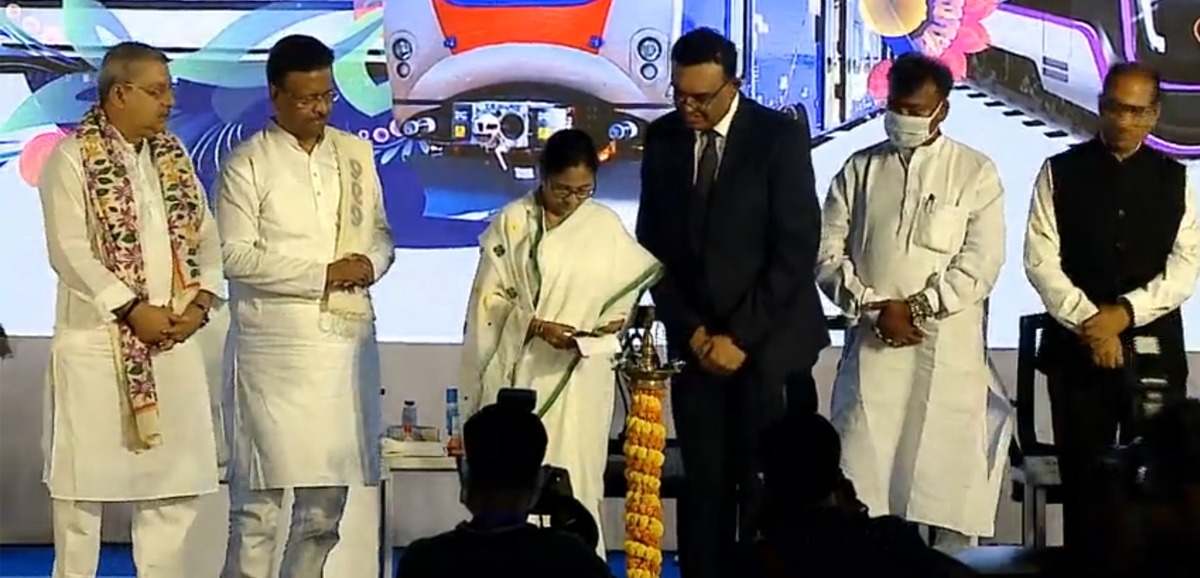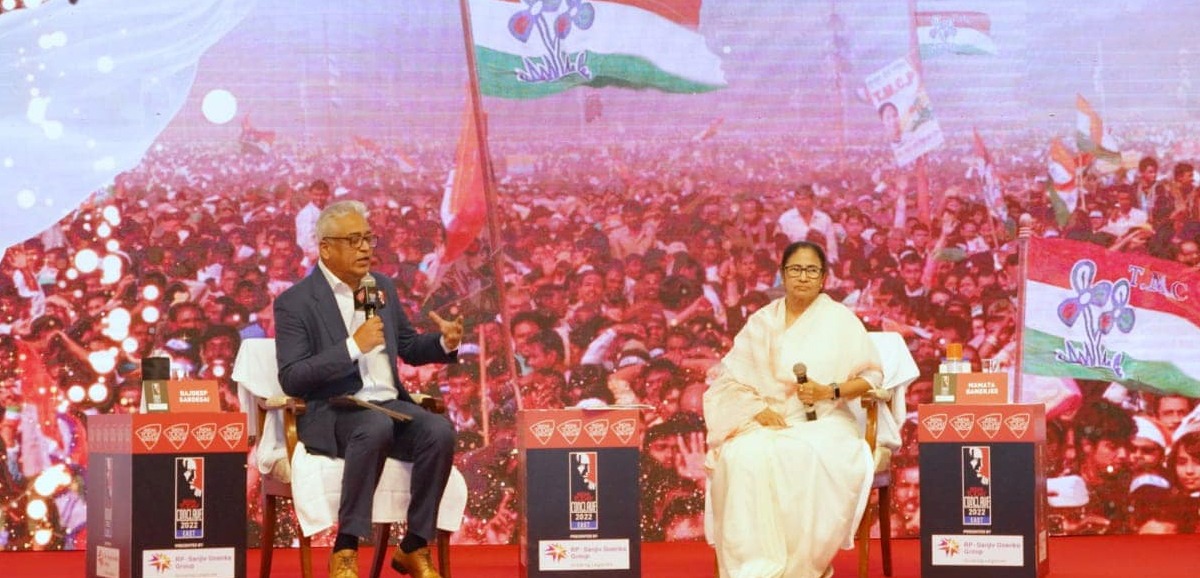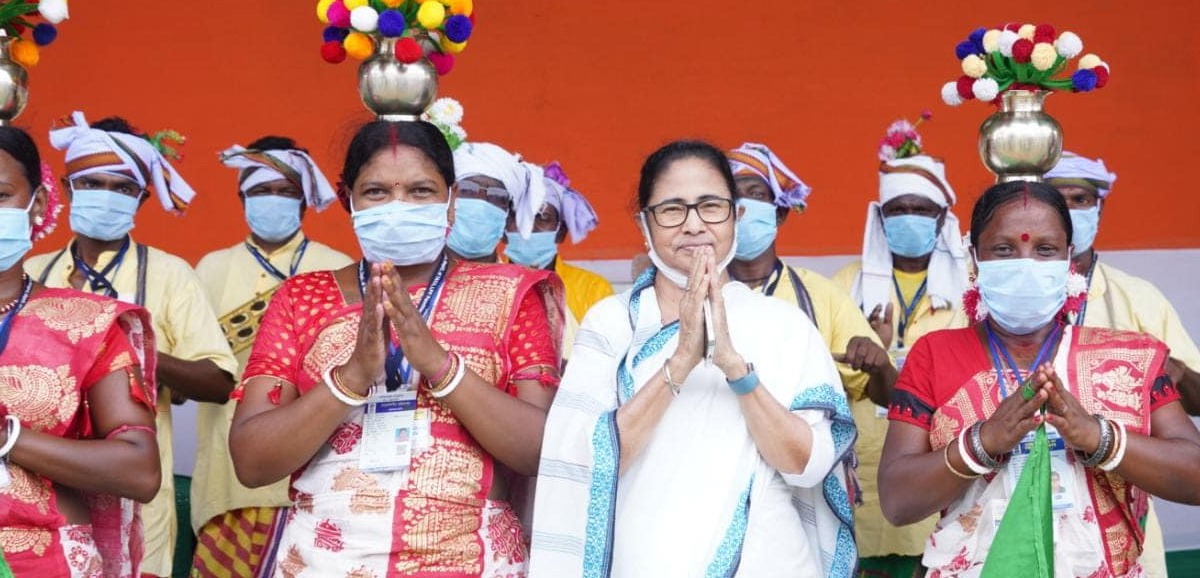From Rabindranath Tagore’s Birbhum, West Bengal Chief Minister and Trinamool Congress Chairperson Mamata Banerjee launched the movement to protect the Bengali language. She led a nearly 4-kilometre-long protest march in Bolpur. It around 2 pm from the Tourist Lodge Crossing and ended at Jambani Bus Stand.
Leaders carried portraits of Rabindranath Tagore and the Bengali alphabet, and marched to the tune of Pratul Mukhopadhyay’s unforgettable song, ‘Ami Banglay Gaan Gai’ (‘I sing in Bengali”). At the end of the march, Mamata Banerjee addressed a public meeting from the stage.
Highlights of her speech:
I thank and congratulate everyone who participated in the march. I am overwhelmed by your love.
I am proud to be born in Bengal. May I remain one with this soil, and continue to walk this path with everyone and speak for everyone.
In the freedom movement, Bengal and its people led the way—and now you’ve forgotten Bengal? I won’t name anyone. Those who understand, will understand. How could you forget Bengal’s contribution?
They demolished the house of Dwarkanath Tagore—is that acceptable? I’ll ask the Bolpur Development Authority to instal a plaque there.
I know the culture of Santiniketan, Visva-Bharati, Jorasanko.
If we can shelter people, why can’t you? Twenty-two lakh migrant workers from Bengal work outside the state.
They’re calling whoever they feel like ‘Bangladeshi’ and ‘Rohingya’, and pushing them to Bangladesh—even when these people have all the citizenship documents. Why this harassment?
Don’t forget history, don’t forget Bengal’s significance.
When you go to Saudi Arabia, Abu Dhabi, Maldives and hug people while giving money—do you check if they’re Hindu or Muslim?
In Delhi, a family is being harassed by being dragged to different police stations. People in the Bengali colonies there are being told to leave the state. A minority-community person was killed and stuffed into a sack in Maharashtra. Is this how your ‘double engine’ government works?
A big plan is underway—using something called SIR (Special Intensive Revision) to blacklist people and thus implement NRC.
I have no right to interfere in other states’ affairs, and I don’t.
But they’re sitting in Gujarat and making lists of Bengalis. Labelling them Rohingyas and deleting crores of names. Where did so many Rohingyas suddenly come from?
Does everyone speak the same language? No. Go to villages in Birbhum, Murshidabad, Bardhaman, visit the Rajbanshis, the Matuas—people of each region has a distinct dialect.
I’m not against any language, and I oppose any divisive policy. I want unity in the country. We in India have a proud tradition of unity in diversity.
People who came legally from Bangladesh after independence—up to March 1971—still speak with that accent. The subcontinent was united once. Now there’s Bangladesh, Pakistan and India. We are citizens of India.
I do not want any division. The country is not anyone’s private estate, to do as they please; it belongs to its people.
Try removing even one name from Bengal’s electoral rolls, and I’ll raise the war cry.
In Assam, seven lakh names were deleted from electoral rolls.
Don’t harass people. As long as I’m alive, I won’t allow NRC or detention camps in Bengal.
They earn money by defaming people while calling others thieves; they are using central agencies to do whatever they please.
If needed, I’ll give my life, but I won’t let anyone harm the Bengali language. This language is the backbone of our culture.
The fight is on, and it will continue. I urge those who are being harassed in other states to come back to Bengal. Call the police helpline—I’ll bring you back on trains, I’ll give you a chance to live.
We don’t have divisions amongst us; we live in harmony and with solidarity.
This worthless policy of theirs will destroy the country. This government won’t last till 2029. Hope they have decided the place where you will go when ousted from power. The Centre is controlling the Election Commission.
In many states, our people are being harassed just for speaking Bengali. We will never accept linguistic terrorism.


